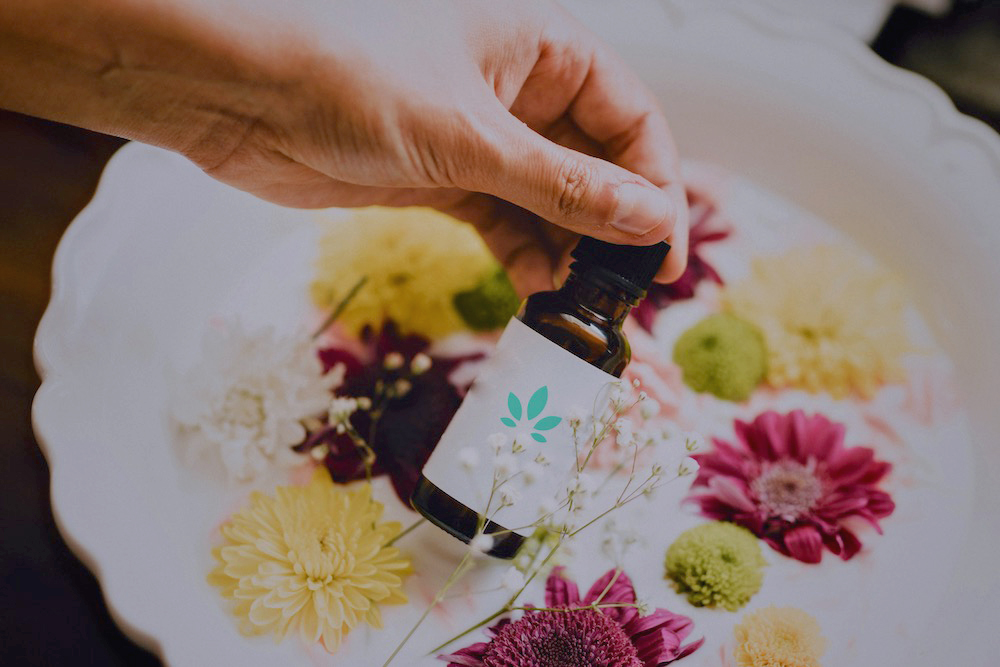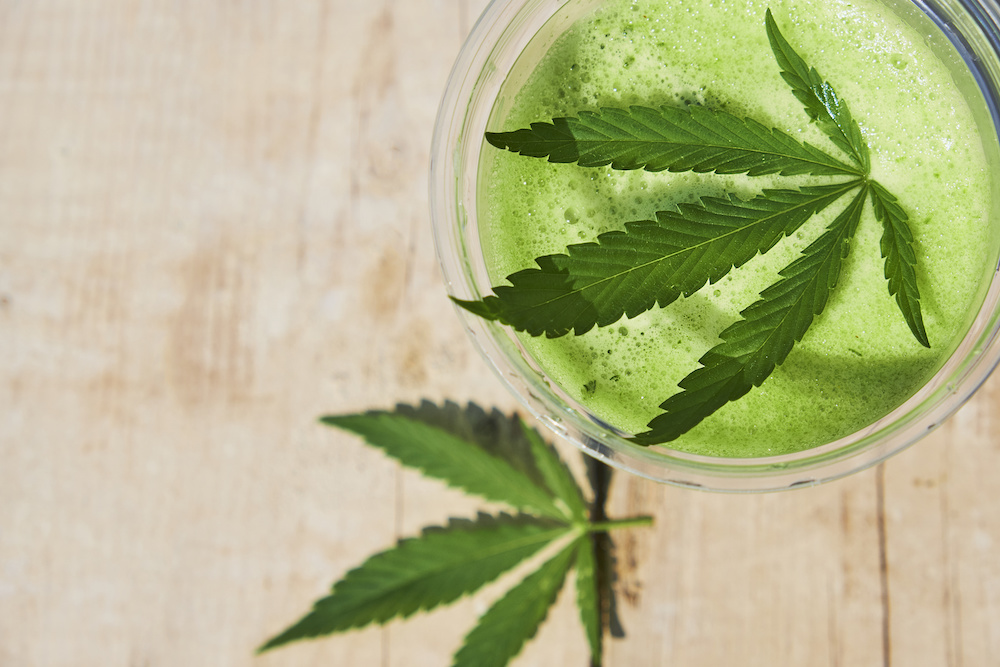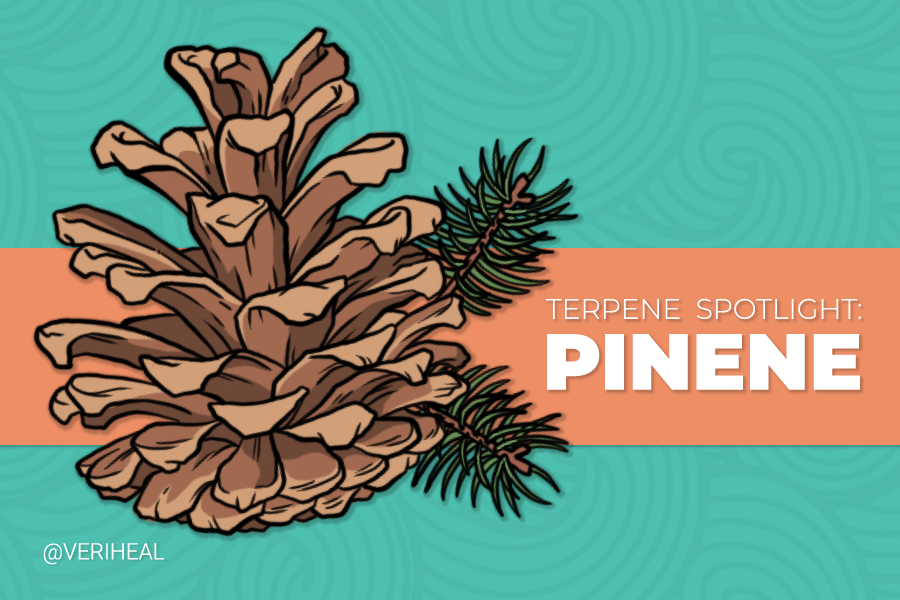Can You Alleviate Pesky Acne with Medical Marijuana?

What You Need to Know — Cannabis for Acne:
Acne is a persistent skin issue affecting many individuals, extending beyond the teenage years for some. The question arises whether medical cannabis can offer relief for severe or persistent acne.
While more research is needed, cannabis shows promise in treating various skin conditions due to its interaction with the body’s endocannabinoid system (ECS), responsible for inflammation control and pain perception regulation. Cannabinoids like cannabidiol (CBD) and Δ9-tetrahydrocannabinol (THC) interact with ECS receptors CB1 and CB2 found in the skin, influencing factors like sebum production and inflammation. CBD, for instance, inhibits excess sebum production and inflammation while promoting sebocyte cell death, crucial in acne formation.
Topical cannabis products target skin receptors directly, but quality studies on their efficacy remain limited, leading dermatologists to cautiously approach their recommendation. Moreover, while cannabis use has been tentatively linked to acne in some studies due to its potential influence on hormone levels, the relationship remains inconclusive. Overall, while cannabis holds potential in acne management, comprehensive research is necessary to determine its efficacy and safety.
The Science Behind Cannabis for Acne:
- How Does Cannabis Help Acne?
- Using Cannabinoid Topicals for Acne
- Can Cannabis Cause Acne?
- Acne Causes
Acne vulgaris, commonly known as acne, is a pesky problem that many people see the end of during their teenage years, but for some people, the acne they have is severe or still occurs as an adult. You visited this page because you may be wondering if medical cannabis can help those with severe or long-term acne. What we do know is that cannabis has the potential to treat a variety of skin conditions including psoriasis, contact dermatitis, eczema, chronic itching known as pruritus, skin cancers, and yes, even acne (7). Though more research is still needed in this area, medical cannabis shows a lot of potential for improving skin conditions.
Medical cannabis and its cannabinoids including cannabidiol (CBD) and Δ9-tetrahydrocannabinol (THC) interact with our body through endogenous cannabinoids which are fat-based neurotransmitters made inside our bodies. Also known as endocannabinoids, these neurotransmitters are a part of the endocannabinoid system (ECS) that is responsible for controlling inflammation, our perception of pain, as well as maintaining homeostasis, or the proper conditions needed for our body to function optimally.
Our endocannabinoids begin working in our body after contact with endocannabinoid receptors CB1 and CB2. CB1 receptors in the central nervous system are thought to mainly interact with THC while CBD helps influence CB2 receptors in various organs and tissues. Both CB1 and CB2 receptors are found in keratinocytes in the top layer of the skin, skin nerve fibers, skin cells, pigment-producing melanocytes, primary sweat glands, as well as hair follicles (3).
Two of the most well-known endocannabinoids anandamide (AEA) and 2-arachidonoylglycerol (2-AG) are also plentiful in skin cells called keratinocytes and fibroblasts (3). Keratinocytes produce keratin and fibroblasts secrete collagen that is responsible for the structure of the skin. There are several other lesser-known endocannabinoids that have also been detected in our skin.
Additionally, cannabis interacts with transient receptor potential (TRP) receptors in various skin cells that are responsible for the formation and maintenance of the skin barrier, cell growth, and immunological and inflammatory processes in the skin (3). Cannabinoids also interact with peroxisome proliferator-activated receptors (PPAR) that are responsible for regulating the expression of genes.
How Does Cannabis Help Acne?
As seen above, the ECS has a large and important presence in the skin. It is responsible for maintaining homeostasis in the skin. Additionally, AEA has been shown to stimulate lipid, or oil production in sebocytes at a low level as well as inducing skin cell death at higher levels (3). Skin cell death is important in skin conditions such as psoriasis or eczema because it affects how quickly dead skin builds up and forms psoriatic plaques.
CBD has been shown to play a role in sebum or skin oil production and inflammation, which is a big role in the development of whiteheads, blackheads, and pimples (3). Research from The Journal of Clinical Investigation shows us that CBD is great at inhibiting extraneous lipid or oil production in the skin, especially when paired with high levels of endogenous AEA (22).
This study shows that CBD doesn’t only slow lipid production, but that it is also responsible for normalizing skin lipid production when it is in a state of imbalance. It also increases sebocyte (skin oil glands) cellular death or apoptosis, which is often where acne forms. Anandamide (AEA) is naturally produced in skin cells, further implicating the role of the ECS in skin homeostasis (22).
CBD is known for its anti-inflammatory properties, and the skin is no exception. CBD can lessen inflammation in sebocytes that can lead to acne while serving as an antimicrobial that can protect pimples and infections on the skin from happening (22). It also exerts a skin moisturizing effect (12).
Using Cannabinoid Topicals for Acne
Many patients who try cannabis and cannabinoids for treating skin conditions typically use topical products to fully activate the cannabinoid and TRP receptors on the skin. Also, using topical products means that the patient is unlikely to experience cannabis systemically, although metabolites may accumulate over time which could complicate drug testing. Because topicals are only absorbed on the skin and not systemically absorbed, they have no appreciable bioavailability other than locally.
Despite promising data regarding acne, there have not been many quality studies testing cannabis topical skincare. Therefore, dermatologists do not typically recommend cannabis and CBD-only products for use on the skin (11). If you are planning on trying medical cannabis topicals, it is important to let your dermatologist know, especially if you are having an upcoming treatment for your acne, and it may affect the results of the treatment.
Important Thoughts to Consider
When going to purchase topicals, including CBD-only products, it is important to check products for lab-tested chemical breakdowns, so you know you are getting quality products. Typically, bigger doses and the longer you use CBD, it is able to provide greater effects against acne over time (22). Moderate to severe acne may also cause scarring, which may be permanent without proper treatment.
Can Cannabis Cause Acne?
Is cannabis able to cause acne breakouts or is it just a rumor? A 2015 survey of 15–24 year-olds with moderate to severe acne taken in France shows that there may potentially be a correlation between cannabis use, but it did not show the strongest correlation due to several confounding variables and no control groups. This study found that acne use was associated with individual reports of cannabis use, smoking more than 10 tobacco cigarettes a day, and sweets such as chocolate (36).
Some researchers believe that cannabis use may contribute to acne because of its role in disrupting the endocrine system. A 2017 study in Andrology compared testosterone serum levels to results from the 2011-2012 National Health and Nutrition Examination Survey (NHANES) to further explore the connection between cannabis and testosterone (34). A total of 66.2% of 1577, reported that they had ever used cannabis while 26.6% reported that they were currently using it. This survey found that people who recently used cannabis did have a slightly higher amount of testosterone in their blood serum. Frequency and duration did not appear to play a significant role. It is important to note that testosterone levels naturally decrease with age and this was also reflected in this study.
Several studies have tested testosterone levels and cannabis use, but they all tend to have mixed results, and many do not show a correlation. According to a study discussed above from The Journal of Clinical Investigation, using CBD is still able to slow down or inhibit excess sebum oil production in the presence of AEA as well as testosterone (22). This means that the researchers were able to find that increased testosterone levels do not make CBD any less effective in modulating sebocytes and sebum production.
There is no clear connection between cannabis use and increased risk for acne. Researchers do believe that there is a connection between diet and acne, but more studies are needed to determine what types of foods may cause acne (38).
Acne Causes
In general, doctors believe that acne is caused by one of the following factors: (1) excess oil production in skin pores, (2) buildup of dead skin cells in the pore, or (3) growth of bacteria in the pore (38). The following factors may also increase your risk (38):
- Hormonal changes – An increase in androgens or male sex hormones in both males and females can lead to acne. This is typically seen during puberty and causes the sebaceous, or oil glands of the skin to enlarge and make sebum or oil that has mixed with fat. Women who are pregnant may also experience hormone changes that cause breakouts.
- Family History – Some doctors believe that if your parents had acne, you have a higher risk of developing it.
- Age – Acne is most common in teenagers, but people of all ages can get it.
- Medications – Medicines containing hormones, corticosteroids, and lithium can also cause acne.
Other factors that don’t necessarily cause acne but make it worse include (38):
- Diet
- Stress
- Clothing pressure
- Environmental irritants
- Squeezing, picking, or scrubbing acne
Note: Veriheal does not intend to give this as professional medical advice. Do not attempt to self-diagnose or prescribe treatment based on the information provided on this page. Always consult a physician before making any decision on the treatment of a medical condition.
1. Acne resource center. American Academy of Dermatology. (n.d.). Retrieved November 6, 2021, from https://www.aad.org/public/diseases/acne
2. Adusumilli, N. C., Hazuka, E. L., & Friedman, A. J. (2021). Nanotechnology to deliver cannabinoids in dermatology. Precision Nanomedicine. https://www.researchgate.net/publication/352200710_Nanotechnology_to_deliver_cannabinoids_in_dermatology
3. Baswan, S. M., Klosner, A. E., Glynn, K., Rajgopal, A., Malik, K., Yim, S., & Stern, N. (2020). Therapeutic Potential of Cannabidiol (CBD) for Skin Health and Disorders. Clinical, cosmetic and investigational dermatology, 13, 927–942. https://www.ncbi.nlm.nih.gov/pmc/articles/PMC7736837/
4. Cannabinoids as anti-acne agents white paper. LAVVAN. (2020, August 27). Retrieved November 6, 2021, from https://www.lavvan.com/cannabinoids-as-anti-acne-agents-white-paper
5. Cheer, J. F., Maccarrone, M., & Piomelli, D. (2016). Seventh european workshop on cannabinoid research and IACM eighth conference on cannabinoids in medicine. Cannabis and Cannabinoid Research, 1(1), 54–58. https://www.liebertpub.com/doi/full/10.1089/can.2015.29001.jfc
6. Dobrosi, N., Tóth, B. I., Nagy, G., Dózsa, A., Géczy, T., Nagy, L., Zouboulis, C. C., Paus, R., Kovács, L., & Bíró, T. (2008). Endocannabinoids enhance lipid synthesis and apoptosis of human sebocytes via cannabinoid receptor‐2‐mediated signaling. The FASEB Journal, 22(10), 3685–3695. https://faseb.onlinelibrary.wiley.com/doi/full/10.1096/fj.07-104877
7. Eagleston, L. R., Kalani, N. K., Patel, R. R., Flaten, H. K., Dunnick, C. A., & Dellavalle, R. P. (2018). Cannabinoids in dermatology: A scoping review. Dermatology Online Journal, 24(6). https://escholarship.org/uc/item/7pn8c0sb
8. Fantus, R. J., Lokeshwar, S. D., Kohn, T. P., & Ramasamy, R. (2020). The effect of tetrahydrocannabinol on testosterone among men in the United States: results from the National Health and Nutrition Examination Survey. World journal of urology, 38(12), 3275–3282. https://pubmed.ncbi.nlm.nih.gov/32067074/
9. Formato, M., Crescente, G., Scognamiglio, M., Fiorentino, A., Pecoraro, M. T., Piccolella, S., Catauro, M., & Pacifico, S. (2020). (‒)-Cannabidiolic Acid, a Still Overlooked Bioactive Compound: An Introductory Review and Preliminary Research. Molecules (Basel, Switzerland), 25(11), 2638. https://www.ncbi.nlm.nih.gov/pmc/articles/PMC7321064/
10. Gupta, A. K., & Talukder, M. (2021). Cannabinoids for skin diseases and hair regrowth. Journal of Cosmetic Dermatology, 20(9), 2703–2711. https://onlinelibrary.wiley.com/doi/10.1111/jocd.14352
11. Hashim, P. W., Cohen, J. L., Pompei, D. T., & Goldenberg, G. (2017). Topical cannabinoids in dermatology. Cutis, 100(1), 50–52. https://cdn.mdedge.com/files/s3fs-public/Document/July-2017/CT100001050.PDF
12. Ikarashi, N., Shiseki, M., Yoshida, R., Tabata, K., Kimura, R., Watanabe, T., Kon, R., Sakai, H., & Kamei, J. (2021). Cannabidiol Application Increases Cutaneous Aquaporin-3 and Exerts a Skin Moisturizing Effect. Pharmaceuticals (Basel, Switzerland), 14(9), 879. https://www.ncbi.nlm.nih.gov/pmc/articles/PMC8469387/
13. Kim, H. Y., Ahn, S. H., Yang, I. J., Park, S. Y., & Kim, K. (2020). Effect of Hataedock Treatment on Epidermal Structure Maintenance through Intervention in the Endocannabinoid System. Evidence-based complementary and alternative medicine : eCAM, 2020, 3605153. https://www.ncbi.nlm.nih.gov/pmc/articles/PMC6998750/
14. Kim, H. J., Kim, B., Park, B. M., Jeon, J. E., Lee, S. H., Mann, S., Ahn, S. K., Hong, S. P., & Jeong, S. K. (2015). Topical cannabinoid receptor 1 agonist attenuates the cutaneous inflammatory responses in oxazolone-induced atopic dermatitis model. International journal of dermatology, 54(10), e401–e408. https://pubmed.ncbi.nlm.nih.gov/26095080/
15. Kircik L. H. (2019). What’s new in the management of acne vulgaris. Cutis, 104(1), 48–52. https://cdn.mdedge.com/files/s3fs-public/KircikCT104001048.PDF
16. Kupczyk, P., Reich, A., & Szepietowski, J. C. (2009). Cannabinoid system in the skin – a possible target for future therapies in dermatology. Experimental Dermatology, 18(8), 669–679. https://onlinelibrary.wiley.com/doi/full/10.1111/j.1600-0625.2009.00923.x
17. Lim, M., & Kirchhof, M. G. (2019). Dermatology-Related Uses of Medical Cannabis Promoted by Dispensaries in Canada, Europe, and the United States. Journal of cutaneous medicine and surgery, 23(2), 178–184. https://pubmed.ncbi.nlm.nih.gov/30380925/
18. Liszewski, W., & Farah, R. S. (2017). Response to: “the role of cannabinoids in dermatology.” Journal of the American Academy of Dermatology, 77(3). https://www.jaad.org/article/S0190-9622(17)31770-X/fulltext
19. Liszewski, W., Stoff, B. K., & Farah, R. S. (2018). The ethics of medical marijuana in dermatology. Journal of the American Academy of Dermatology, 78(3), 634–636. https://www.jaad.org/article/S0190-9622(17)32266-1/fulltext
20. Milando, R., & Friedman, A. (2018). Cannabinoids: Potential role in inflammatory and neoplastic skin diseases. American Journal of Clinical Dermatology, 20(2), 167–180. https://static1.squarespace.com/static/5dab51c52920995e635d4295/t/5e4bbe406ddc335ff28de578/1582022212575/Milando2019AmJClinDermatol.pdf
21. Nickles, M. A., & Lio, P. A. (2020). Cannabinoids in dermatology: Hope or hype? Cannabis and Cannabinoid Research, 5(4), 279–282. https://www.liebertpub.com/doi/full/10.1089/can.2019.0097
22. Oláh, A., Tóth, B. I., Borbíró, I., Sugawara, K., Szöllõsi, A. G., Czifra, G., Pál, B., Ambrus, L., Kloepper, J., Camera, E., Ludovici, M., Picardo, M., Voets, T., Zouboulis, C. C., Paus, R., & Bíró, T. (2014). Cannabidiol exerts sebostatic and antiinflammatory effects on human sebocytes. The Journal of clinical investigation, 124(9), 3713–3724. https://www.ncbi.nlm.nih.gov/pmc/articles/PMC4151231/
23. Oláh, A., Markovics, A., Szabó-Papp, J., Szabó, P. T., Stott, C., Zouboulis, C. C., & Bíró, T. (2016). Differential effectiveness of selected non-psychotropic phytocannabinoids on human Sebocyte functions implicates their introduction in dry/seborrhoeic skin and acne treatment. Experimental Dermatology, 25(9), 701–707. https://onlinelibrary.wiley.com/doi/10.1111/exd.13042
24. Rao, G. K., & Kaminski, N. E. (2006). Cannabinoid-mediated elevation of intracellular calcium: A structure-activity relationship. Journal of Pharmacology and Experimental Therapeutics, 317(2), 820–829. https://jpet.aspetjournals.org/content/317/2/820.long
25. Río, C. D., Millán, E., García, V., Appendino, G., DeMesa, J., & Muñoz, E. (2018). The endocannabinoid system of the skin. A potential approach for the treatment of skin disorders. Biochemical pharmacology, 157, 122–133. https://static1.squarespace.com/static/5dab51c52920995e635d4295/t/5e146bc591a90d6253893f69/1578396623219/delRio2018BiochemPharmacol.pdf
26. Roh YS, Sutaria N, Biles NF, Kwatra SG. Treatment of Chronic Pruritus With Medical Marijuana. JAMA Dermatol. 2021;157(7):879–880. https://jamanetwork.com/journals/jamadermatology/article-abstract/2778442
27. Scheau, C., Caruntu, C., Badarau, I. A., Scheau, A. E., Docea, A. O., Calina, D., & Caruntu, A. (2021). Cannabinoids and Inflammations of the Gut-Lung-Skin Barrier. Journal of personalized medicine, 11(6), 494. https://www.ncbi.nlm.nih.gov/pmc/articles/PMC8227007/
28. Scheau, C., Badarau, I. A., Mihai, L.-G., Scheau, A.-E., Costache, D. O., Constantin, C., Calina, D., Caruntu, C., Costache, R. S., & Caruntu, A. (2020). Cannabinoids in the pathophysiology of skin inflammation. Molecules, 25(3), 652. https://www.mdpi.com/1420-3049/25/3/652
29. Shalaby, M., Yardley, H., & Lio, P. A. (2018, January). Stirring the pot: Cannabinoids and atopic dermatitis. Practical Dermatology. Retrieved November 6, 2021, from https://practicaldermatology.com/articles/2018-jan/stirring-the-pot-cannabinoids-and-atopic-dermatitis
30. Sheriff, T., Lin, M. J., Dubin, D., & Khorasani, H. (2020). The potential role of cannabinoids in dermatology. The Journal of dermatological treatment, 31(8), 839–845. https://pubmed.ncbi.nlm.nih.gov/31599175/
31. Sheriff, T., Lin, M. J., Dubin, D., & Khorasani, H. (2019). The potential role of cannabinoids in dermatology. Journal of Dermatological Treatment, 31(8), 839–845. http://unsworks.unsw.edu.au/fapi/datastream/unsworks:74034/bin6a816229-c1e8-4758-bbf7-8359ad9c714a?view=true&xy=01
32. Ständer, S., Reinhardt, H. W., & Luger, T. A. (2006). Topische Cannabinoidagonisten. Eine effektive, neue Möglichkeit zur Behandlung von chronischem Pruritus [Topical cannabinoid agonists. An effective new possibility for treating chronic pruritus]. Der Hautarzt; Zeitschrift fur Dermatologie, Venerologie, und verwandte Gebiete, 57(9), 801–807. https://pubmed.ncbi.nlm.nih.gov/16874533/
33. Szepietowski, J. C., Szepietowski, T., & Reich, A. (2005). Efficacy and tolerance of the cream containing structured physiological lipids with endocannabinoids in the treatment of uremic pruritus: a preliminary study. Acta dermatovenerologica Croatica : ADC, 13(2), 97–103. https://pubmed.ncbi.nlm.nih.gov/16324422/
34. Thistle, J. E., Graubard, B. I., Braunlin, M., Vesper, H., Trabert, B., Cook, M. B., & McGlynn, K. A. (2017). Marijuana use and serum testosterone concentrations among U.S. males. Andrology, 5(4), 732–738. Thistle, J. E., Graubard, B. I., Braunlin, M., Vesper, H., Trabert, B., Cook, M. B., & McGlynn, K. A. (2017). Marijuana use and serum testosterone concentrations among U.S. males. Andrology, 5(4), 732–738. https://www.ncbi.nlm.nih.gov/pmc/articles/PMC5660879/
35. U.S. Department of Health and Human Services. (2021, February 19). Acne. National Institute of Arthritis and Musculoskeletal and Skin Diseases. Retrieved November 6, 2021, from https://www.niams.nih.gov/health-topics/acne
36. Wolkenstein, P., Misery, L., Amici, J. M., Maghia, R., Branchoux, S., Cazeau, C., Voisard, J. J., & Taïeb, C. (2015). Smoking and dietary factors associated with moderate-to-severe acne in French adolescents and young adults: results of a survey using a representative sample. Dermatology (Basel, Switzerland), 230(1), 34–39. https://pubmed.ncbi.nlm.nih.gov/25413494/
37. Zagórska-Dziok, M., Bujak, T., Ziemlewska, A., & Nizioł-Łukaszewska, Z. (2021). Positive effect of cannabis sativa L. Herb extracts on skin cells and assessment of cannabinoid-based Hydrogels Properties. Molecules, 26(4), 802. https://www.mdpi.com/1420-3049/26/4/802/htm
38. U.S. Department of Health and Human Services. (2021, February 19). Acne. National Institute of Arthritis and Musculoskeletal and Skin Diseases. Retrieved December 6, 2021, from https://www.niams.nih.gov/health-topics/acne/advanced#tab-causes
39. Acne: Treatment, types, causes & prevention. Cleveland Clinic. (n.d.). Retrieved December 6, 2021, from https://my.clevelandclinic.org/health/diseases/12233-acne
40. Mayo Foundation for Medical Education and Research. (2020, September 12). Acne. Mayo Clinic. Retrieved December 6, 2021, from https://www.mayoclinic.org/diseases-conditions/acne/symptoms-causes/syc-20368047
41. U.S. Department of Health and Human Services. (2021, February 19). Acne. National Institute of Arthritis and Musculoskeletal and Skin Diseases. Retrieved December 6, 2021, from https://www.niams.nih.gov/health-topics/acne/advanced#tab-types








